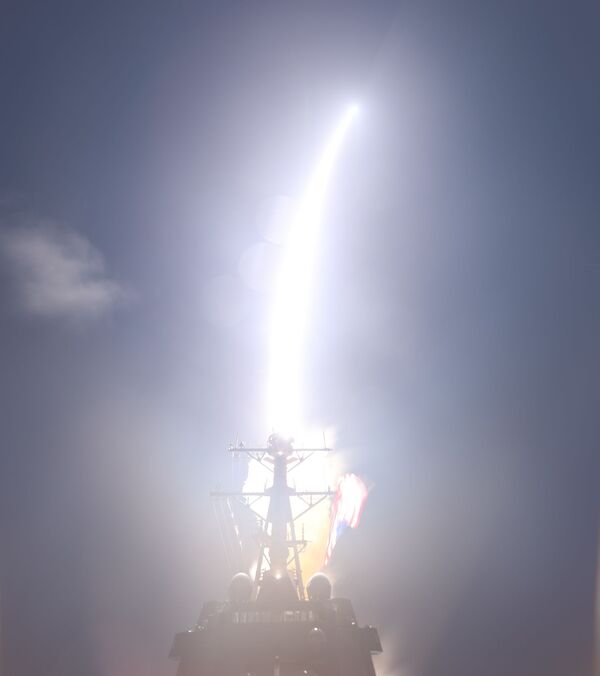For the first time, a US Navy destroyer has used a Standard Missile-3 (SM-3) Block IIA missile to intercept an intercontinental ballistic missile (ICBM). The demonstration could shift how the US and allies such as Japan conceive of homeland missile defense.
According to the US Missile Defense Agency (MDA), the Monday test saw a Ballistic Missile Defense (BMD) System-equipped destroyer near Hawaii successfully intercept an inbound ICBM while the missile was still in outer space.
The MDA released an animated video showing the entire test, which SM-3 maker Raytheon posted on its Twitter page.
BREAKING 📰: “This first-of-its kind test shows the effectiveness of the SM-3 IIA against long-range threats.”
— Raytheon Missiles & Defense (@RaytheonDefense) November 17, 2020
Learn more about the SM-3 Block IIA and its recent successful #homelanddefense flight test demonstration: https://t.co/UP1TqFjTaT pic.twitter.com/vb9nQ6haMy
During the test, an ICBM-representative target was launched from the test site on Kwajalein Atoll in the Republic of the Marshall Islands, picked up by orbiting ballistic missile early-warning satellites and shot down by an SM-3 Block IIA fired by the USS John Finn, which received targeting information from the satellites.
Of particular note is that the intercept happened outside Earth’s atmosphere, during the so-called “midcourse” of the ICBM’s trajectory, and involved a kinetic interceptor that obliterated the target rather than an explosive warhead that would have detonated near it.

This was the sixth flight test of an SM-3 Block IIA fired by an Aegis BMD-equipped vessel, but the first to demonstrate midcourse interception ability outside the atmosphere - a capability the new BlockIIA missiles have, thanks to booster upgrades. Previously, the SM-3 had been seen as filling a gap between the Ground-based Midcourse Defense (GMD) system and terminal-phase interceptors like the Patriot and THAAD systems, the latter of which was recently deployed to Hawaii as a temporary defense.
"This was an incredible accomplishment and critical milestone for the Aegis BMD SM-3 Block IIA program," MDA Director Vice Admiral Jon Hill said in the news release. "The Department is investigating the possibility of augmenting the Ground-based Midcourse Defense system by fielding additional sensors and weapon systems to hedge against unexpected developments in the missile threat.”
Presently, US GMD missiles are based in silos on the US mainland, but the smaller SM-3, carried by a destroyer or missile cruiser or fired from an Aegis Ashore system, could potentially be used anywhere on the globe.

